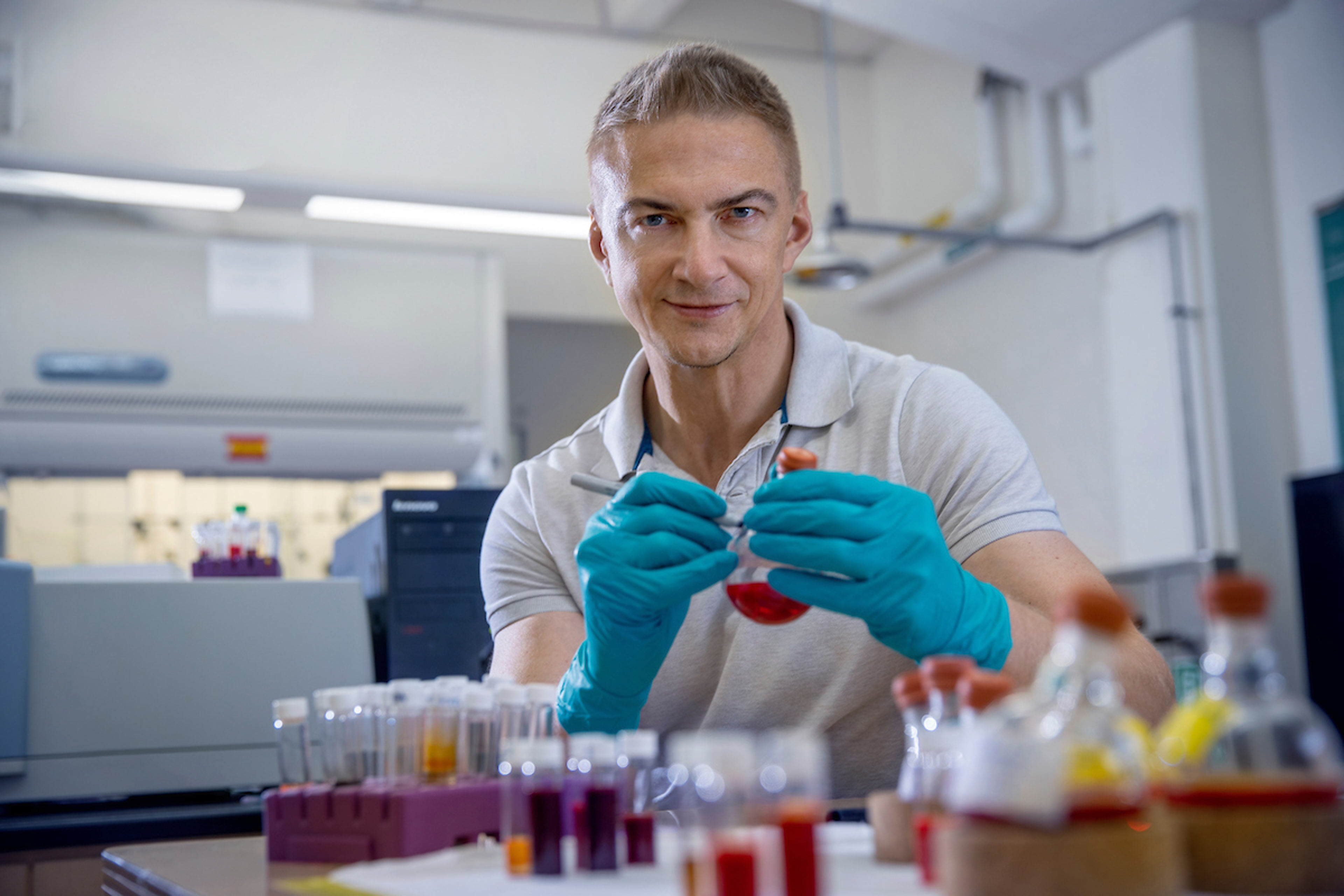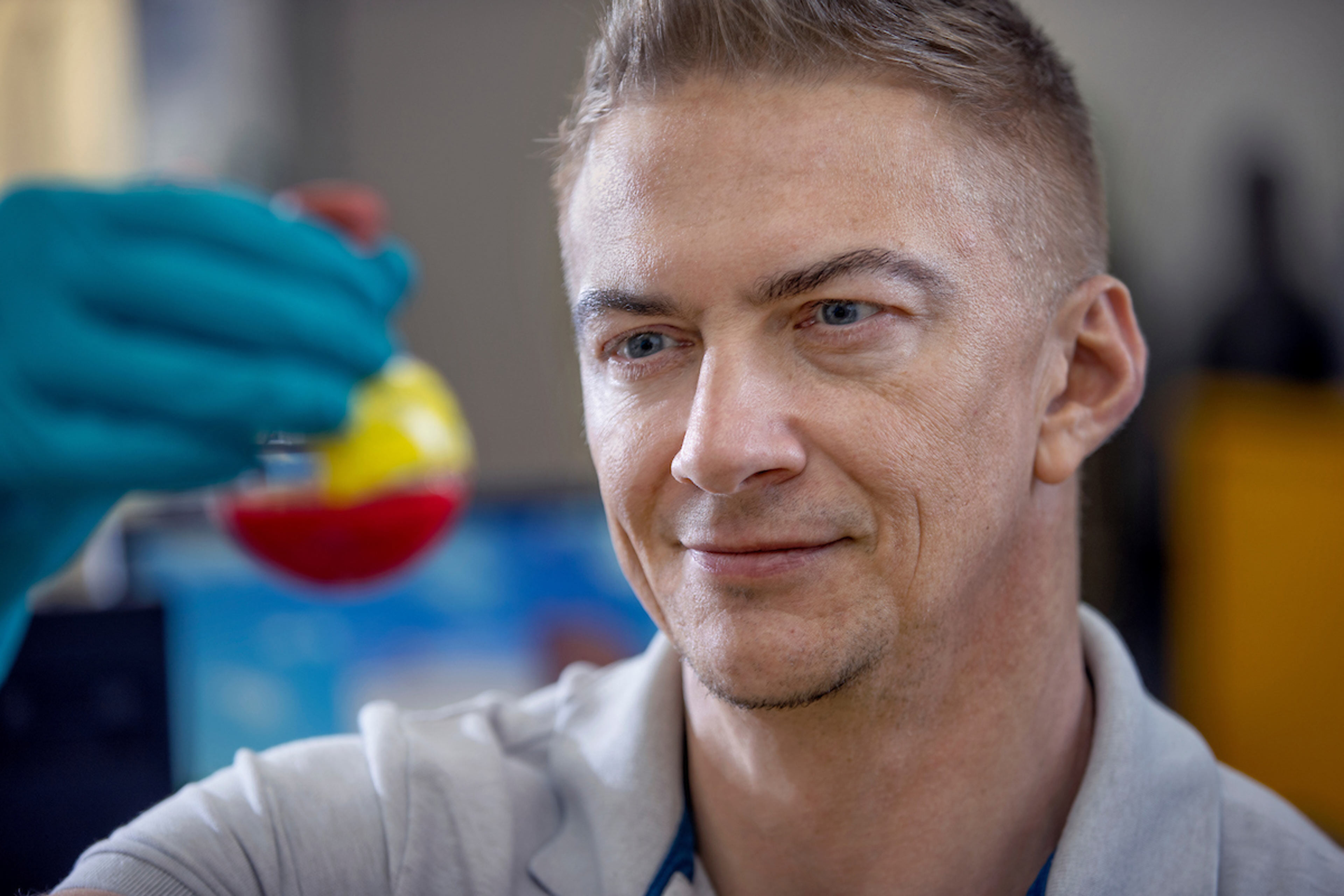
BGSU scientist developing possible major technological upgrade
Estimated Reading Time:
Dr. Mikhail Zamkov, a professor in the BGSU Department of Physics and Astronomy, receives NSF grant to develop printable lasers using improved quantum dots
By Nick Piotrowicz
Quantum dots were a major scientific breakthrough that proved revolutionary for commercial products like QLED televisions and LED lamps, but the technology also faces significant limitations.
Known as nanocrystals, quantum dots are totally reliant upon their tiny size – hence the term quantum – for properties like creating the beautiful colors one might observe in a high-quality television display or drawing energy from the sun as solar cells.
But in high energy-density environments like fabricating laser diodes that emit powerful light, quantum dots face a paradox: Their small size creates their quantum effects, but does not hold up to lasing.
“It’s the problem of having too much energy in a tiny, little dot that can’t handle it,” said Dr. Mikhail Zamkov, a Bowling Green State University professor in the Department of Physics and Astronomy. “Once you increase its size, then it’s not quantum anymore. That’s the big dilemma.”
The Zamkov Lab at BGSU could have the answer to the problem.
The National Science Foundation awarded Zamkov a grant to further study the development of colloidal quantum shells, the structure of which is specifically designed to withstand high energy-dense conditions.
His lab’s research into a nanocrystal that withstands lasing could have far-ranging effects for the future of, among other things, flexible electronic devices and medical imaging.
Advances in quantum shells could mean less cost for manufacturers and consumers, and possibly less exposure for patients undergoing medical imaging procedures like an X-ray.
Nanocrystals represent a tremendous upgrade over thin-film silicon wafer chips, which require highly specialized facilities, making them difficult and expensive to produce.
“Nanocrystals are like Lego bricks that you build your applications with,” Zamkov said. “You can program whatever property you want in each one of those bricks, and then they self-assemble – which is different from wafer-based silicon chip technology where you have to use chemical processing to get whatever features you want.”

Semiconductor nanocrystals like quantum dots have been both revolutionary and highly decorated. One of Zamkov’s co-authors on previously published work, Dr. Moungi Bawendi of MIT, shared the Nobel Prize in Chemistry in 2023 for his research into quantum dot development.
The Nobel Foundation called quantum dots “almost perfect particles,” though their design – which is both highly effective and restrictive in high energy-dense conditions – largely hasn’t changed.
Quantum shells could provide the necessary upgrade.
The geometry of quantum shells addresses the main issues facing the design of quantum dots by diffusing energy without degrading, proving more efficient, more economical and more scalable.
“Lasing by itself requires a lot of power in a single dot and has a minimum energy threshold that automatically kills a quantum dot,” Zamkov explained. “Our group came up with a way to avoid that: make the dot bigger without losing the quantum behavior. Instead of a dot, we use a spherical shell that you can make as big as you want because the thin shell is what is quantum.”
Currently, Zamkov’s Lab at BGSU is the only research group making these shells.
Several physics research groups at the University are affiliated with the world-renowned BGSU Center for Photochemical Sciences, through which students can obtain a doctorate in photochemical sciences that allows them to experience cutting-edge research into the interaction between light and matter.
“It’s a very unique Ph.D. program we have that combines chemistry, physics and photo, so we have the facilities others don’t,” Zamkov said.
The next major hurdle in the technology is the development of semiconductor nanostructures that hold up to lasing.
The Zamkov Lab at BGSU may hold the keys to what comes next.
“It’s very exciting,” Zamkov said. “If we can convince a large group of people that quantum shells are the way to go, we’re the ones holding the recipe, so to speak. Quantum shells could be quantum dots 2.0.”
Related Stories
Media Contact | Michael Bratton | mbratto@bgsu.edu | 419-372-6349
Updated: 06/09/2025 11:59AM




